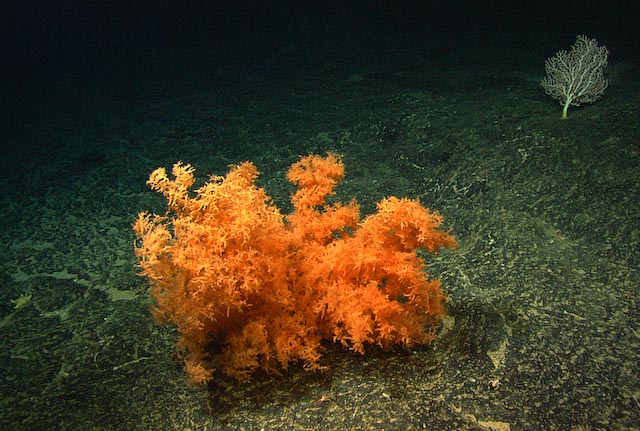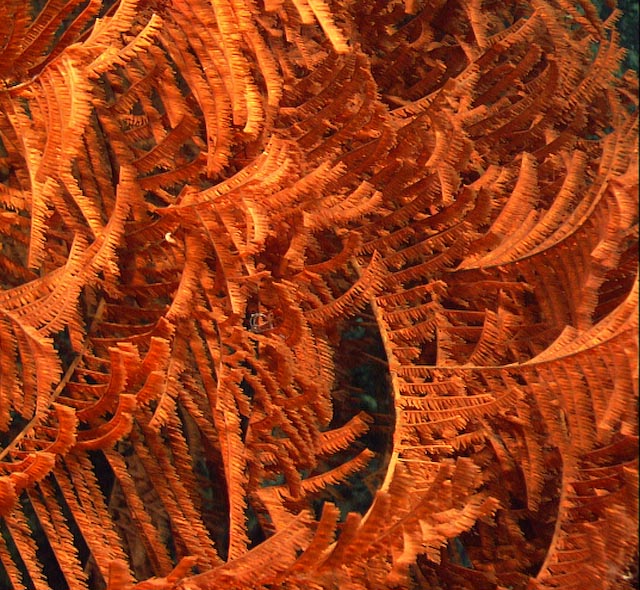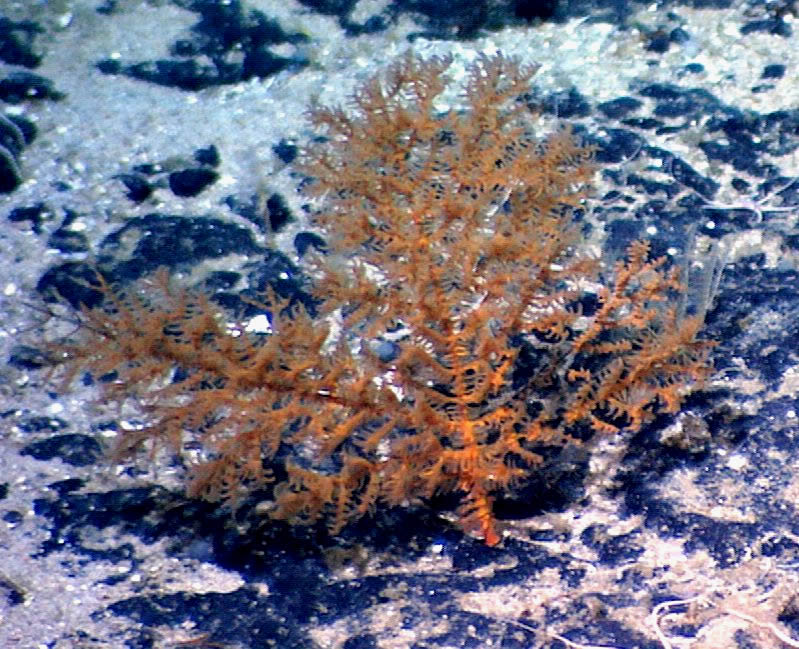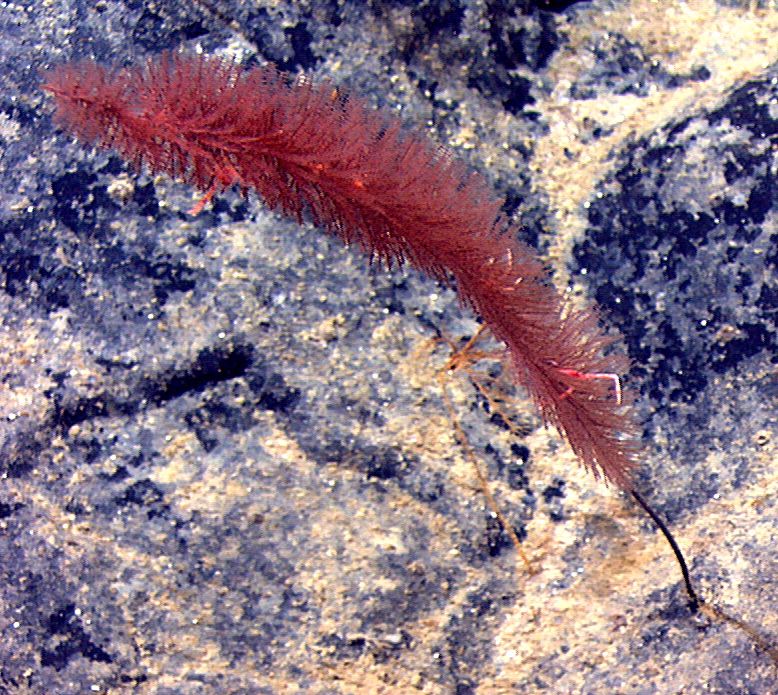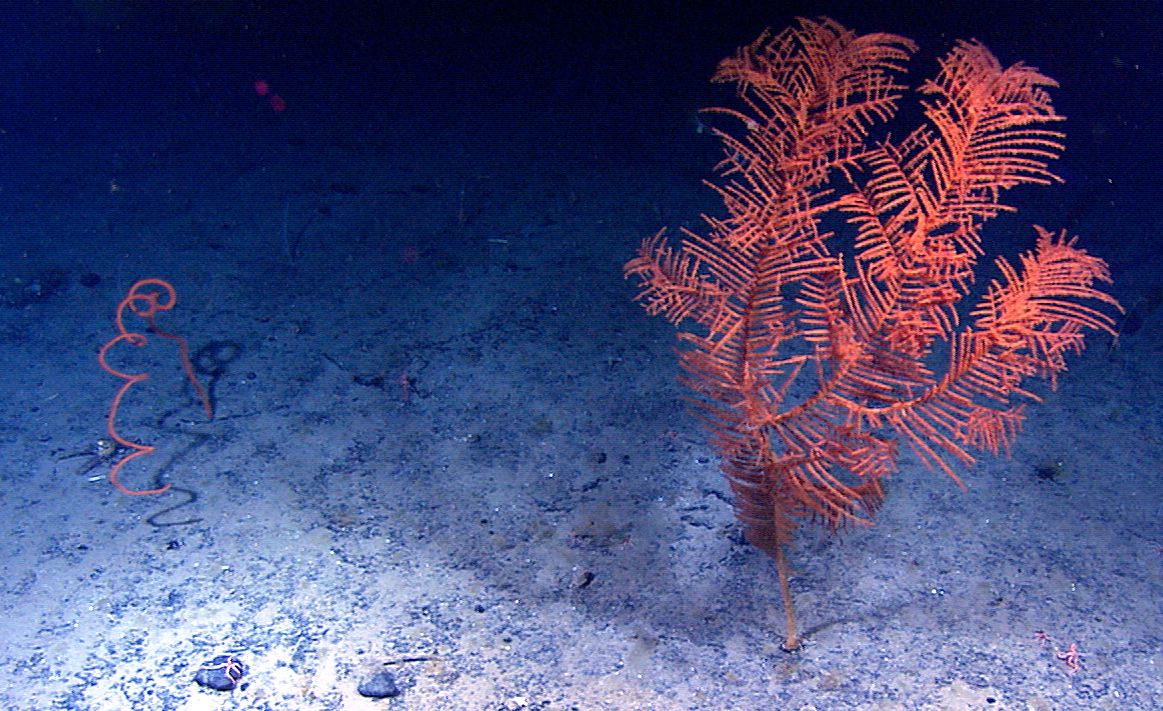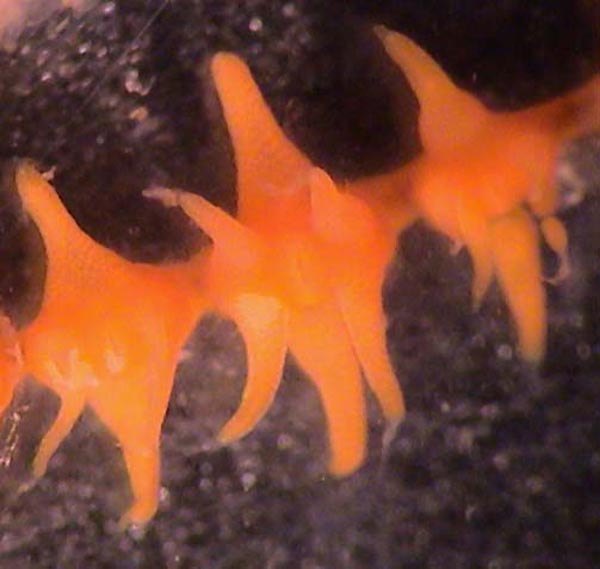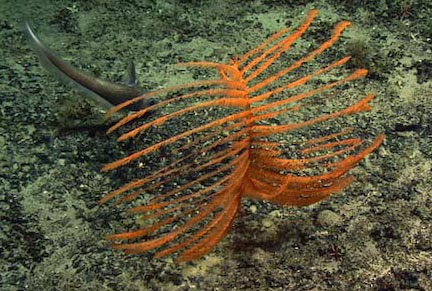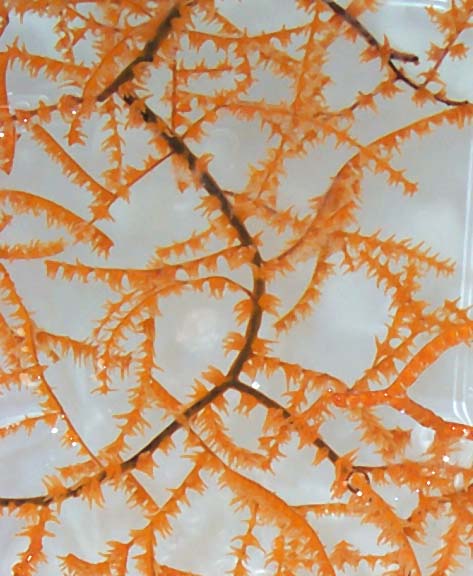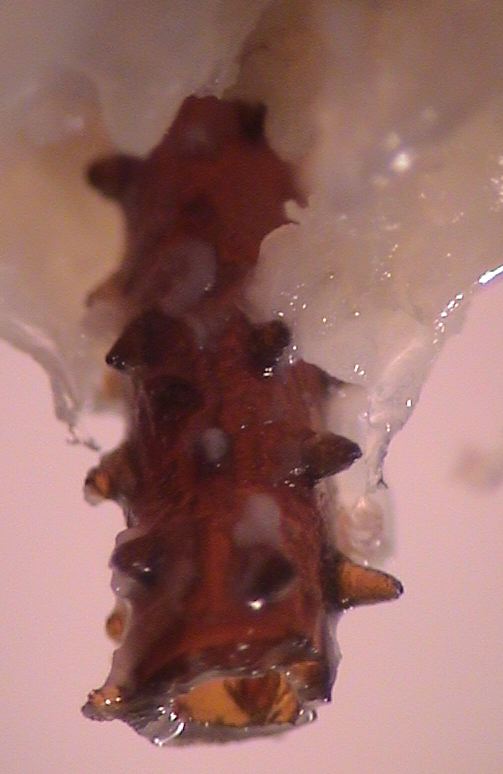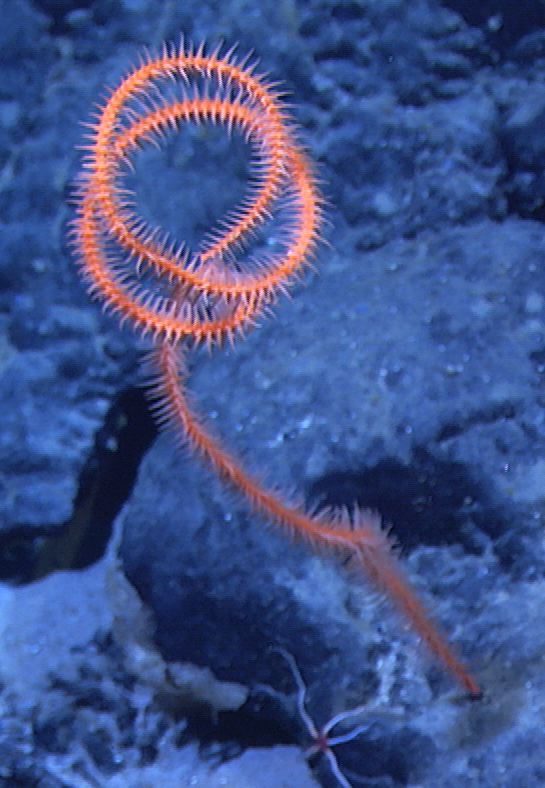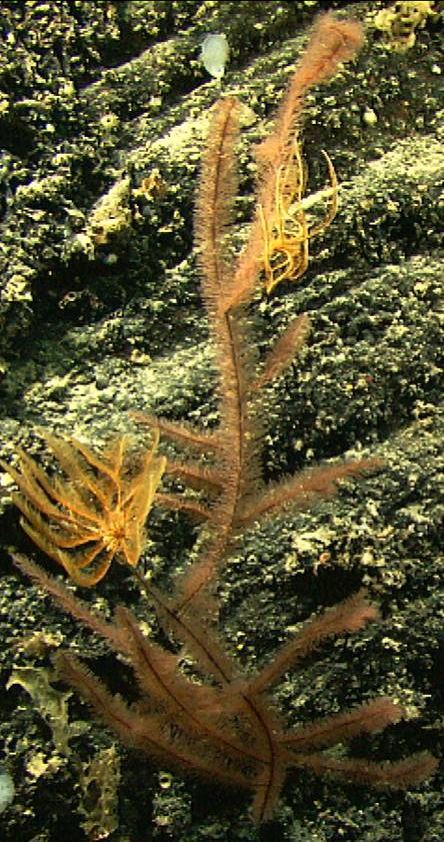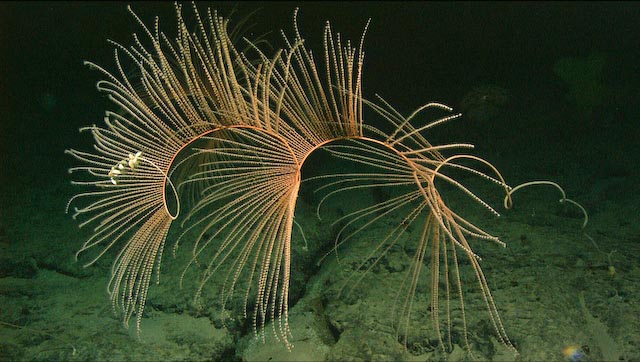
One of the most elegantly beautiful deep-sea octocoral species is Iridogorgia magnispiralis, seen here on Nashville Seamount at 2130 meters depth. The colonies grow to >10 feet tall. You can see a cluster of white barnacles that have settled on the tip of this colony. (Image copyright of the Deep Atlantic Stepping Stones Research Team; IFE-URI; and NOAA)
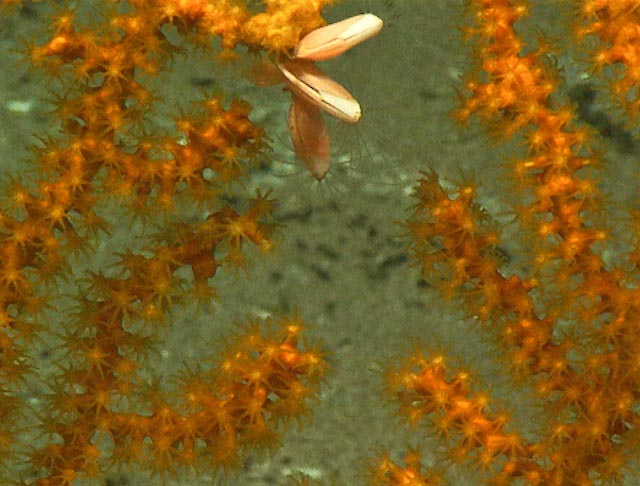
This close-up of a Paramuricea octocoral colony growing at 1900 meters depth shows an example of the many interconnected polyps that characterize a colonial animal. Each individual polyp has a "mouth" surrounded by a ring of 8 tentacles. The 3 large white objects at the top center are barnacles that have settled on the coral. If you look closely you can see the "legs" (cirri) of the barnacle extending from the shell. (Image copyright of the Deep Atlantic Stepping Stones Research Team; IFE-URI; and NOAA)
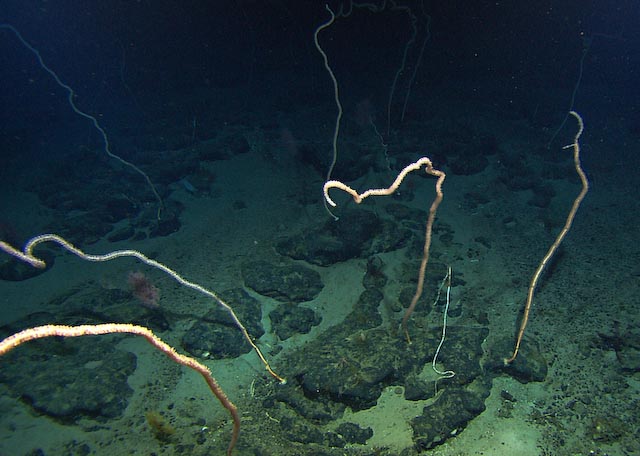
A field of whip-like bamboo corals (Lepidisis sp.) stand 2 - 3 meters tall on Balanus Seamount at 1560 meters depth. (Image copyright of the Mountains in the Sea Research Team; IFE; and NOAA)
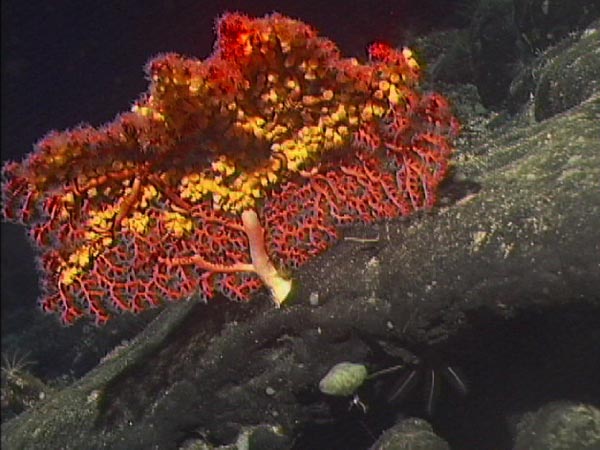
A bubble-gum coral (Paragorgia sp.) is being overgrown by yellow zoanthids, a type of colonial amemone, on xx Seamount at xx meters depth. If you look closely, you can also see a well-camoflauged orange brittle star on the left side of the colony. Many deep-sea corals have other invertebrates clinging to their branches. (Image copyright of the Mountains in the Sea Research Team; IFE; and NOAA)
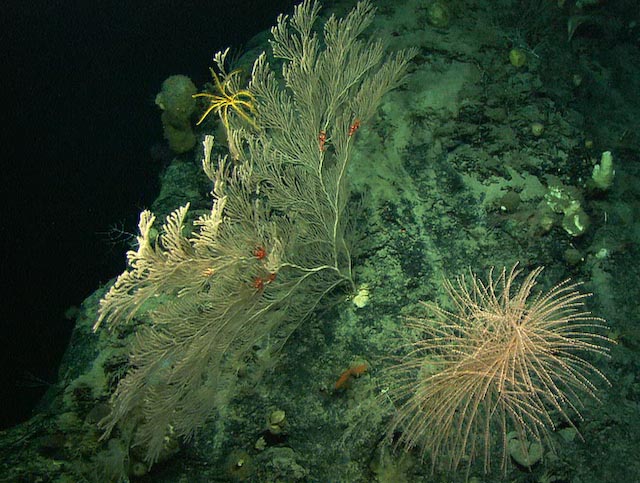
A large sea fan (Primnoidae) grows next to a spiraling Rhodaniridogorgia (Chrysogorgiidae) at the upper edge of a wall on Balanus Seamount at 1900 meters depth. (Image copyright of the Deep Atlantic Stepping Stones Research Team; IFE-URI; and NOAA)
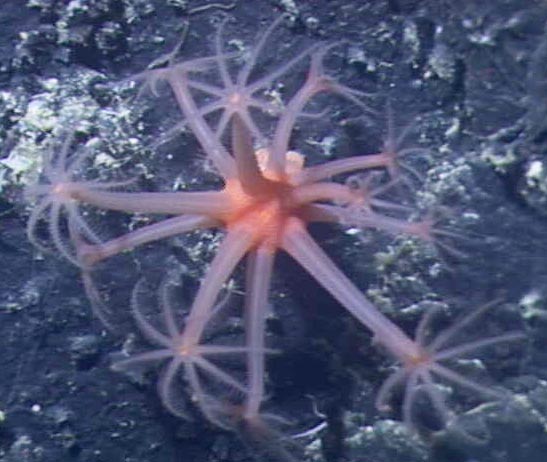
A deep-sea soft coral (Anthomastus sp.) shows about a dozen large polyps extended, revealing the eight pinnate tentacles that surround the "mouth," a characteristic of octocorals. (Image copyright of the Mountains in the Sea Research Team; WHOI; and NOAA)
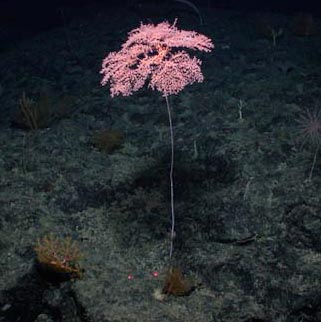
A relatively common deep-sea octocoral species is Metallogorgia melanotrichos, which we refer to as the "pink parasol coral," seen here on xxx Seamount at xxx meters depth. The colony stands about a meter tall. (Image copyright of the Mountains in the Sea Research Team; IFE; and NOAA)
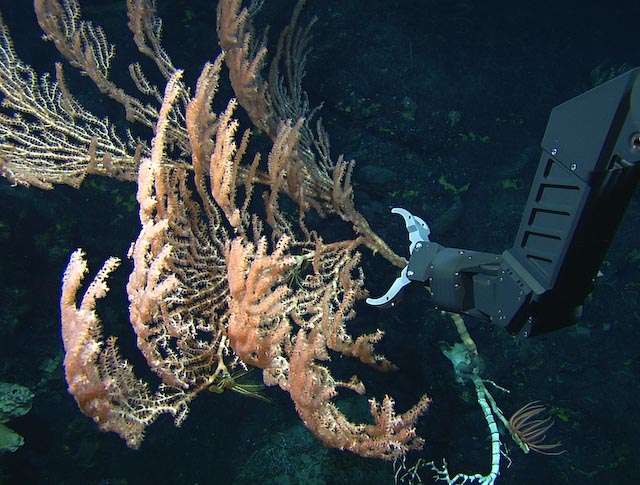
In this photo showing the manipulator arm of the ROV Hercules about to sample a branch from a deep-sea bamboo coral (Keratoisis sp.) on Bear Seamount at 1478 meters depth, you can see the exposed internal skeleton (bright white with black stripes, below the arm) where tissue has been removed, probably by a predatory seastar. On the still living parts of the colony, the polyps and tissue give the coral a pink hue. (Image copyright of the Mountains in the Sea Research Team; IFE; and NOAA)
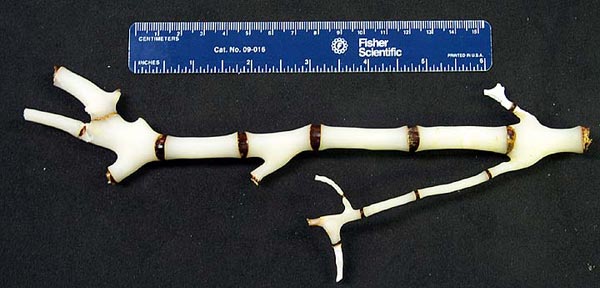
A portion of a branch - shown above being sampled - from Keratoisis sp. with the tissue removed to show the internal skeleton. In bamboo corals (family Isididae), the skeleton is comprised of a series of hard calcium carbonate internodes (the bright white parts) separated by more flexible proteinaceous nodes (the dark bands). (Image copyright of the Mountains in the Sea Research Team; IFE; and NOAA)
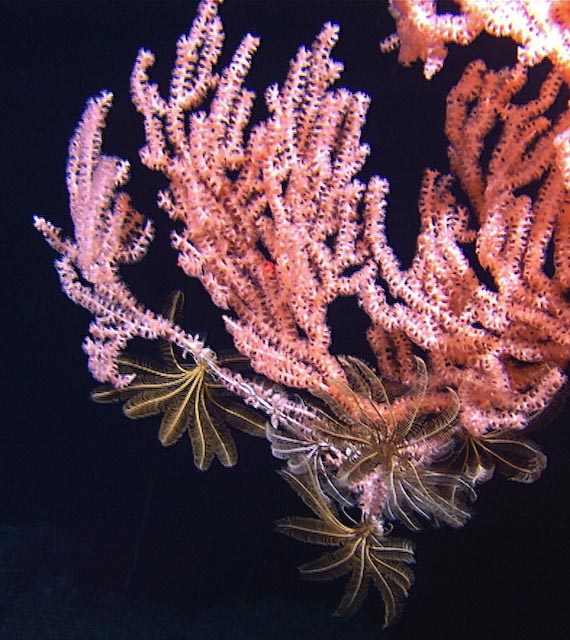
Four feather stars (Crinoidea), close relatives of sea stars, cling to the branches of a Keratoisis sp. bamboo coral at 1800 meters depth on Manning Seamount. (Image copyright of the Mountains in the Sea Research Team; IFE; and NOAA)
